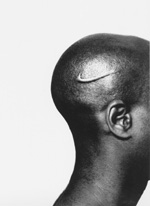
Art
Open Studios showcases student work
Open Studios, sponsored by the UCSC Art Department, was held at Baskin Visual Arts on December 1. The quarterly event, which is free and open to the public, showcases a variety of student work, including metal sculptures, oil paintings, photographs, intermedia installations, drawings, prints and electronic inventions.
Visiting Artist Program brings Przyblyski to Baskin
Jeannene Przyblyski gave a lecture and demonstration titled “Psychogeography & Time Traveling through the Historical Unconscious: A Few Projects by the San Francisco Bureau of Urban Secrets” as part of the Visiting Artist Program. Przyblyski, an artist, historian and urban strategist, earned her Ph.D. in Art History from the University of California, Berkeley, and is associate professor in the School of Interdisciplinary Studies at San Francisco Art Institute. In 2001, she founded The San Francisco Bureau of Urban Secrets, a visual arts and urbanism think tank that incubates and promotes art and other public interventions in city life. The Art Department’s Visiting Artist Program, which combines Visiting Artist Special Topics courses and the Visiting Artist Lecture Series, will be fully implemented in the 2007 to 2008 academic year. The Visiting Artist Lecture Series, Issues and Artists, will feature seven guest artists. The series begins this spring.
This winter, the Visiting Artist Program will bring Julian Myers, a senior lecturer at UC Davis and at the California College of the Arts, to UCSC. Myers's areas of expertise include writing visual criticism, cultural and political theory since 1850, art, gender and sexuality, art and language, the histories of video art, and social and relational practices in contemporary art. He earned his Ph.D. in the History of Art at UC Berkeley.
Digital Arts and New Media

Scott Draves presents “The Electric Sheep and Their Dreams in High Fidelity.”
Award-winning software artist discusses Electric Sheep
Scott Draves, an award-winning software artist known as Spot, presented “The Electric Sheep and Their Dreams in High Fidelity” in November. Spot’s Electric Sheep is a distributed screen-saver that harnesses idle computers into a render farm with the purpose of animating and evolving artificial life-forms known as sheep. The votes of the users form the basis for the fitness function for a genetic algorithm on a space of abstract animations. Users also may design sheep by hand for inclusion in the gene pool.
This cyborg mind, composed of 40,000 computers and people, was used to make Dreams in High Fidelity: a painting that evolves. It consists of 100GB of high definition sheep that would have taken one computer over 200 years to render, played back to form a non-repeating continuously morphing image.
Spot’s work has appeared in Wired Magazine, the Prix Ars Electronica, the O'Reilly Emerging Technology Conference, and on the dance-floor at the Sonar festival in Barcelona. In 1997 Spot received a Ph.D. in computer science from Carnegie Mellon University for a thesis on metaprogramming for media processing, and in 2003 he published the Spotworks DVD.
Lecture focused on issues in game design
Ernest Adams, freelance game designer, writer and teacher, presented a lecture titled “Emerging Issues in Game Design” in October. Topics included emerging issues such as sex in games, the consequences of blurring the boundaries between in-game and out-of-game events in MMOGs, the end of graphics as a dominant force in selling games, new roles for AI, new forms of interactive narratives, procedural content generation, games as art, and above all, the arrival of the mass market in the form of casual players.
Adams, who works with the International Hobo Design Group, has worked in the game industry since 1989. He’s the author of three books, including Fundamentals of Game Design with Andrew Rollings. Adams was most recently employed as a lead designer at Bullfrog Productions on the Dungeon Keeper series, and for several years before that as the audio/video producer on the Madden NFL Football line for Electronic Arts. He has developed online, computer, and console games for everything from the IBM 360 mainframe to the PS2. He is also the founder and first chairman of the IGDA.
Mary Porter Sesnon Art Gallery
Sesnon exhibit featured work of Hank Willis Thomas
The work of Hank Willis Thomas was exhibited at the Sesnon Gallery in “Signifying Blackness,” which ran through November 18. The show included photos from his "B®ANDED" and "Unbranded" series as well as from his recent body of work, "Winter in America."

"Signifying Blackness," an exhibit of the work of Hank Willis Thomas |
Thomas has gained wide recognition with his series B®ANDED, a group of images in which he digitally adds a scarred Nike logo on the head and chest of black models. Thomas' work, using the branding metaphor with its uneasy historic associations with African American history, speaks about the extent to which commercial branding is geared to racial groups. His work raises questions about identity and commodification, acknowledging the violence confronting the African American community, through a visual language of the physical body, advertising logos, and marketing.
Thomas gave a lecture about his work in the Porter Dining Hall, and a reception for the artist was followed by a conversation with Thomas and New York critic Isolde Brielmaier.
For more information about the gallery and its upcoming exhibits, call 831-459-3606 or visit
http://arts.ucsc.edu/sesnon/.



